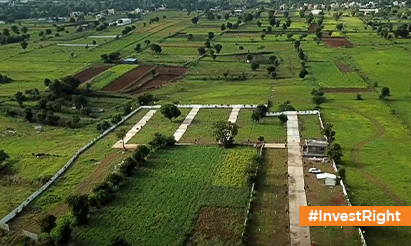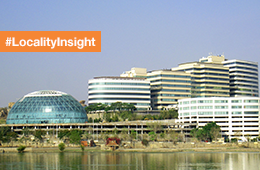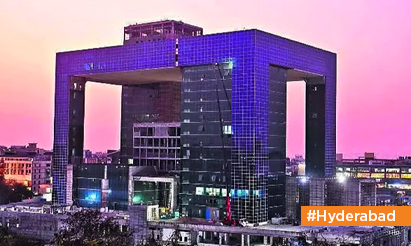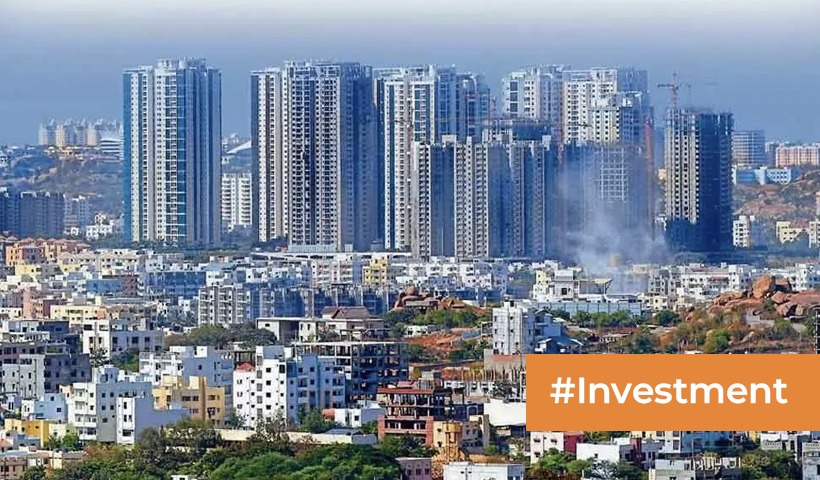Housing demand in South Hyderabad is fueled by IT and transportation infrastructure
Hyderabad, the capital and largest city of the Indian state of Telangana, is noted because of its thriving commercial and residential real estate sector, which have attracted several well-known real estate developers.
Ever since 1990s, the city’s residential real estate market has been fueled by the rise of the information technology (IT), information technology-enabled services (ITeS), and electronic hardware manufacturing (EHM) industries. Nonetheless, the aforementioned industrial and commercial growth, as well as the resulting housing boom, has mostly taken place in Hyderabad’s western quadrant, which includes places like Jubilee Hills, Banjara Hills, Gachibowli, Kondapur, and Madhapur.
Nonetheless, like the western region became overcrowded, housing demand in South Hyderabad, that includes areas like Shamshabad, Attapur, Shadnagar, Pocharam, Maheshwaram, Adibatla, and Rajendra Nagar, began to rise in the previous 3-4 years. Real estate prices within city’s western parts have risen, prompting individuals to buy and rent in the more cheap South Hyderabad regions. Land lots could be purchased for a low cost and afterwards sold for a better price subsequently, according to investors.
Initial operationalization of the Rajiv Gandhi International Airport (RGIA) near Shamshabad on March 23, 2008, gave a boost to the region’s growth, which had been lagging. As a result of the airport’s existence, number of residential sites and housing projects in the surrounding districts has soared.
The Andhra Pradesh government (Hyderabad was part of Andhra Pradesh throughout the mentioned period) also put a greater emphasis on improving the quadrant’s architecture in hopes of improving its quality of living.
The city’s southern reaches are likely to continue to improve, and the following factors are expected to support this expansion:
South Hyderabad’s planned Information Technology Investment Region (ITIR)
The Central Government issued the following decision on May 28, 2008, to establish Information Technology Investment Regions (ITIRs) around the country. An ITIR is meant to promote commercial development in a region by providing a favourable economic outlook, fair and investor-friendly rules, and outstanding transportation and civic facilities. The Central Government invited to online application form for ITIRs from the Union Territory (UT) and State governments, according to a Gazette announcement released the very same day.
As a result, the plan to establish an ITIR in Hyderabad was approved by the Indian government. The ITIR will be divided into five zones: three main agglomerations and two connection zones that will run parallel to the ORR. South Hyderabad has been designated as Zone 2 (one of the three primary zones). It would result in the expansion of current industrial regions and Special Economic Zones (SEZs), including, Hardware Park, Fab City, the Andhra Pradesh Industrial Infrastructure Corporation Work Centre (APIIC Work Centre), and the areas surrounding the international airport.
Each zone covers a total of 19,575 acres, with the integrated services accounting for 9,500 acres (48 percent) as well as the non-processing region accounting for the remainder. Its operating region is made up of IT, ITeS, and EHM units, as well as the necessary logistical roads and facilities. Residences and stores, as well as social and institutional facilities, will be located inside the non-processing zone.
Brownfield (modernising of urban infrastructure) and greenfield advancement can be used to create the processing area (commercial and industrial units) in Zone 2 of the ITIR (fresh real estate development). 385 acres of the entire processing facility of 9,500 acres will be developed as brownfields, whereas 9,115 acres will be developed as greenfields.
The land given for embedded systems is 6,550 acres, whereas the land granted for IT software design is 2,565 acres, out of the total area designated for Greenfield development.
Such project will contribute to the development of a giant commercial and industrial centre in South Hyderabad, which might one day match the one in the city’s western quadrant. It will result in the creation of jobs and a considerable increase in housing consumption in the region, causing the supply of built-up properties to increase. This development will be aided by the increased availability of plots in the area.
Improvements to transportation infrastructure
Road development: Throughout the areas surrounding the airport and Maheshwaram, the Telangana government plans to build 120-foot-wide inter-sector roadways. Along either side, there will be 30-foot-wide service roadways. In addition, it has been suggested that some of the current village roadways be widened.
In sectors and neighbourhoods, arterial and sub-arterial roads serve as linking roadways. The arterial highways would be six lanes wide, whereas the sub-arterial roads would be four lanes wide.
Hyderabad MMTS: The Hyderabad Multi-Modal Transport System (MMTS) is a city-wide suburban railway system. Falaknuma-Lingampally, Falaknuma-Nampally, and Nampally-Lingampally are the three primary routes just on 50-kilometer network. The nearest MMTS station to South Hyderabad is Falaknuma, after which the conventional railway line continues to Umdanagar.
The Telangana government intends to broden the MMTS service between Falaknuma to Shamshabad’s Rajiv Gandhi International Airport by leveraging existing rail track that runs until Umdanagar. As a result, new transport tracks would be laid through Umdanagar to Shamshabad by the government.
Connector between Srisailam Highway (National Highway 765) and Nagarjuna Sagar Road: The State government plans to upgrade the linking road between Srisailam Highway (National Highway 765) and Nagarjuna Sagar Road (National Highway 565). The Srisailam Highway connects the Inner Ring Road with the Central Hyderabad regions of Hyderabad.
The section, which currently has two lanes, would be extended to four lanes at a cost of Rs 172 crore. This initiative will make it easier to travel between different parts of South Hyderabad.
To summarise, given large cost disparity across West and South Hyderabad will result in increased demand for houses in the latter. With the planned industrial and commercial growth, including the upgrading of transportation systems in South Hyderabad, this need will be maintained and facilitated.
Disclaimer: The views expressed above are for informational purposes only based on industry reports and related news stories. PropertyPistol does not guarantee the accuracy, completeness, or reliability of the information and shall not be held responsible for any action taken based on the published information.




